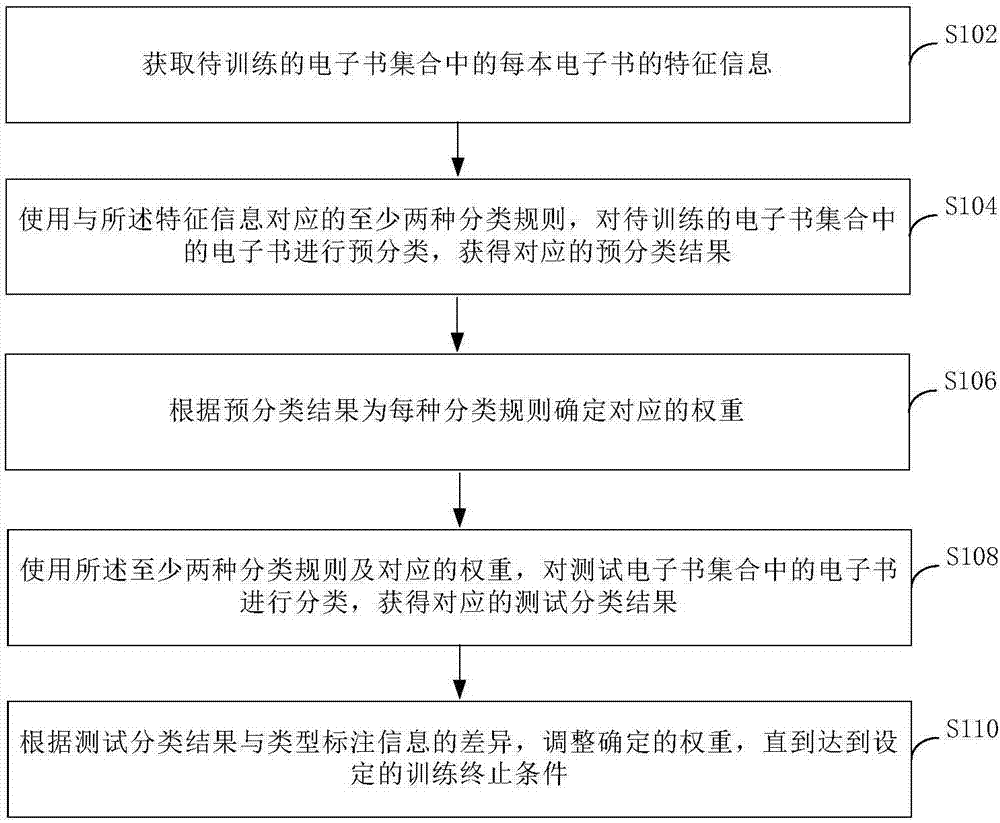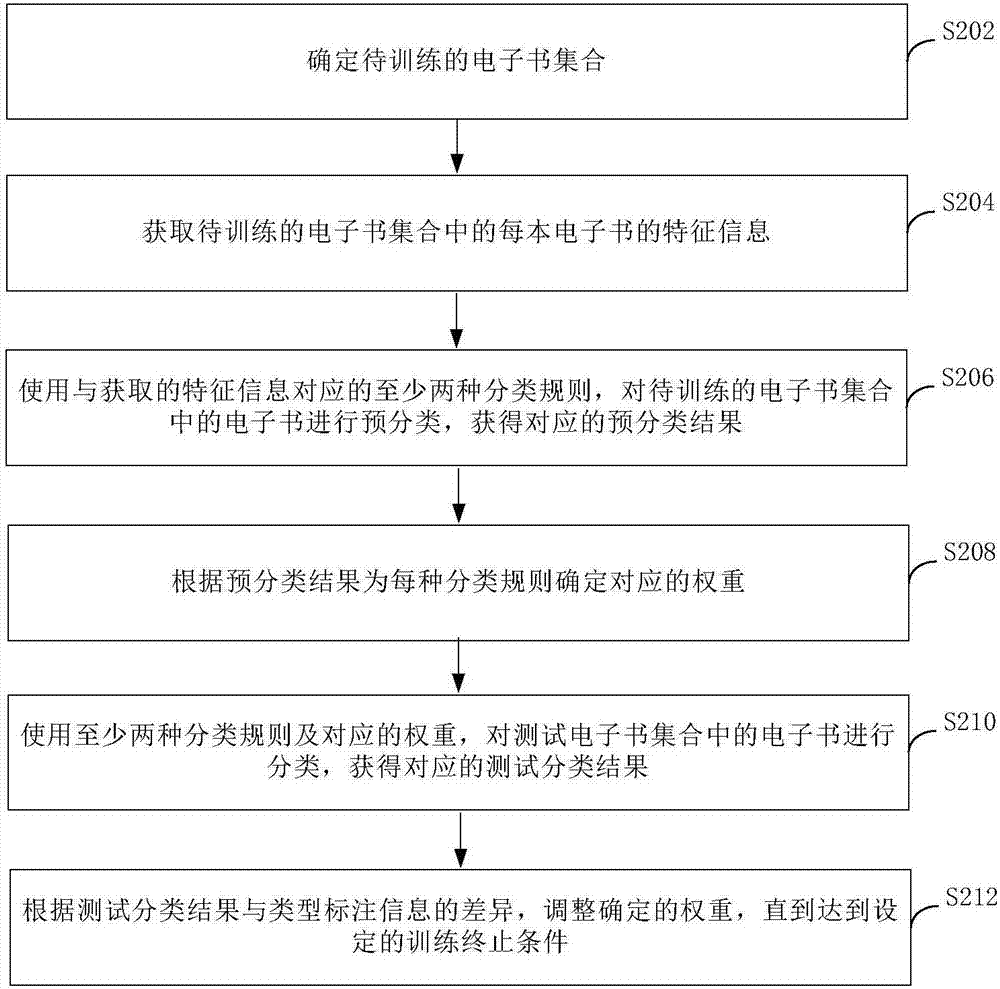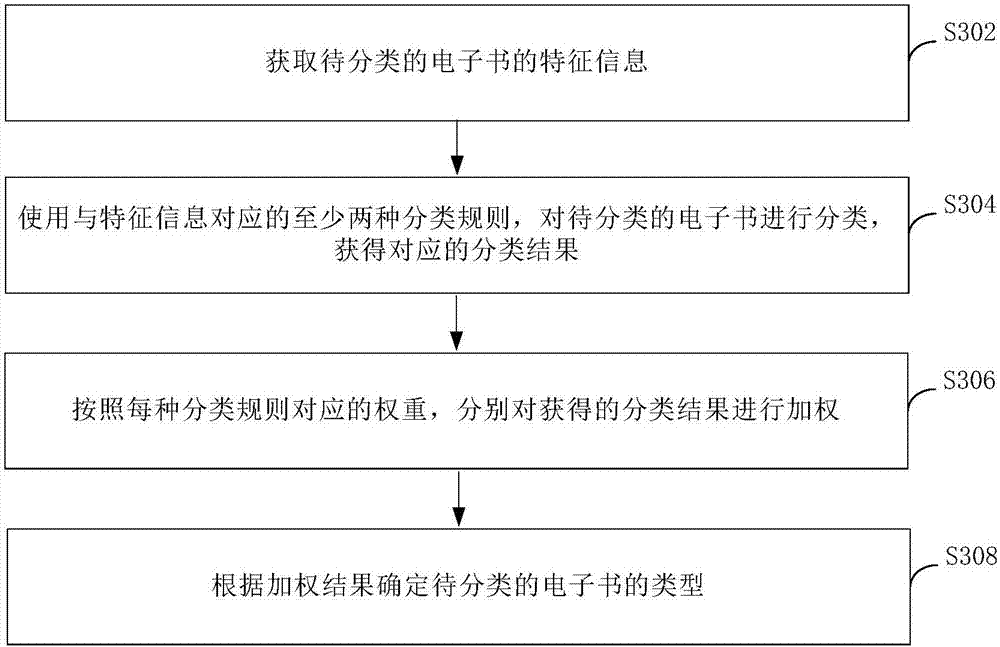E-book classification and training method, device and equipment
A classification method and e-book technology, applied in the field of data processing, can solve problems such as misclassification and inaccurate classification, and achieve the effects of accurate results, improved accuracy, and reduced misclassification.
- Summary
- Abstract
- Description
- Claims
- Application Information
AI Technical Summary
Problems solved by technology
Method used
Image
Examples
Embodiment 1
[0028] refer to figure 1 , shows a flow chart of steps of a method for e-book classification training according to Embodiment 1 of the present invention.
[0029] The electronic book classification training method of the present embodiment comprises the following steps:
[0030] Step S102: Obtain feature information of each e-book in the e-book collection to be trained.
[0031] The e-book collection to be trained includes a certain number of various types of e-books, and in this embodiment, the e-book classification training is performed based on the e-book collection.
[0032] Wherein, the feature information of each e-book may be any appropriate information characterizing the features of the e-book, including but not limited to: content feature information, attribute feature information, user behavior feature information, etc. of the e-book.
[0033] Step S104: Using at least two classification rules corresponding to the feature information, pre-classify the e-books in th...
Embodiment 2
[0047] refer to figure 2 , shows a flow chart of steps of a method for e-book classification training according to Embodiment 2 of the present invention.
[0048] The electronic book classification training method of the present embodiment comprises the following steps:
[0049] Step S202: Determine the collection of e-books to be trained.
[0050] Wherein, the e-book collection to be trained includes multiple e-books of different types.
[0051] Step S204: Obtain feature information of each e-book in the e-book collection to be trained.
[0052] Wherein, the extraction of feature information of each e-book can be realized by those skilled in the art in any appropriate manner according to the actual situation, including but not limited to: maximum matching method, maximum probability method word segmentation, vector space model method and so on.
[0053] In this embodiment, the feature information of the e-book includes, but is not limited to: content feature information, ...
Embodiment 3
[0095] refer to image 3 , shows a flow chart of steps of a method for classifying e-books according to Embodiment 3 of the present invention.
[0096] The electronic book classification method of the present embodiment comprises the following steps:
[0097] Step S302: Obtain feature information of electronic books to be classified.
[0098] The feature information of the e-books to be classified may be any appropriate information characterizing the features of the e-books, including but not limited to: content feature information, attribute feature information, user behavior feature information, etc. of the e-book.
[0099] Step S304: Classify the electronic books to be classified by using at least two classification rules corresponding to the feature information, and obtain corresponding classification results.
[0100] Wherein, each classification rule classifies e-books from one dimension, for example, from content feature dimension, from attribute feature dimension, fr...
PUM
 Login to View More
Login to View More Abstract
Description
Claims
Application Information
 Login to View More
Login to View More - R&D
- Intellectual Property
- Life Sciences
- Materials
- Tech Scout
- Unparalleled Data Quality
- Higher Quality Content
- 60% Fewer Hallucinations
Browse by: Latest US Patents, China's latest patents, Technical Efficacy Thesaurus, Application Domain, Technology Topic, Popular Technical Reports.
© 2025 PatSnap. All rights reserved.Legal|Privacy policy|Modern Slavery Act Transparency Statement|Sitemap|About US| Contact US: help@patsnap.com



